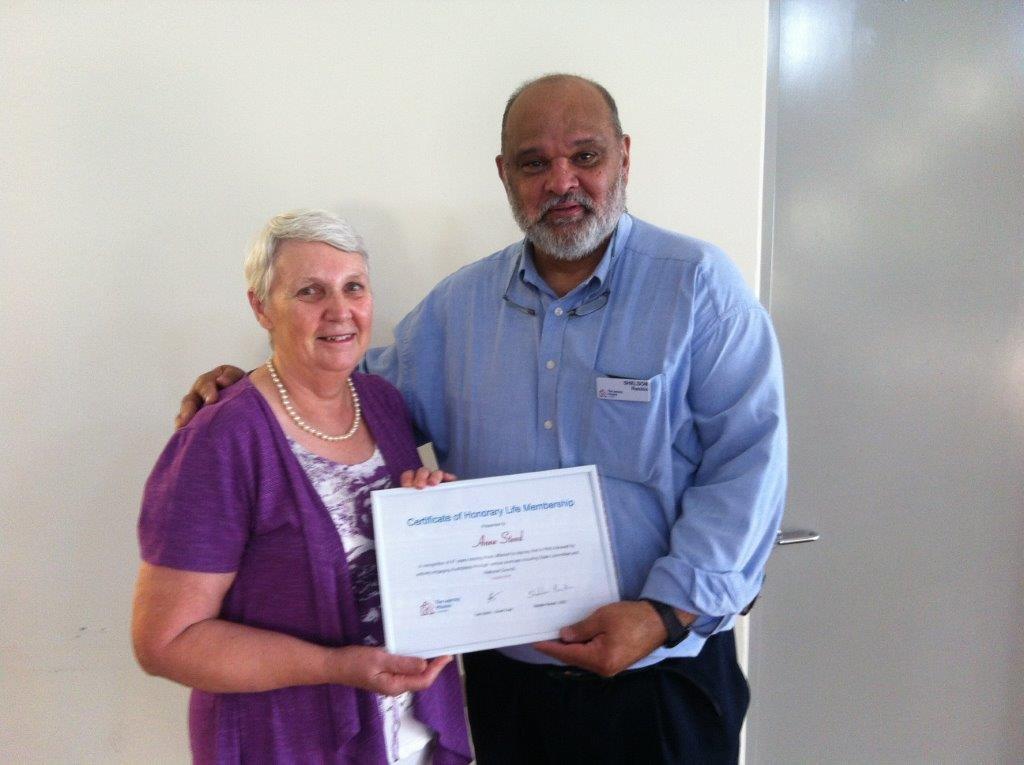In April, Anne Steed, from Kalamunda Uniting Church, was honoured with life membership of The Leprosy Mission Australia in recognition of her work supporting and serving people living with leprosy. The award was presented by The Leprosy Mission Australia CEO, Sheldon Rankin, who was the keynote speaker for an information afternoon tea.
Anne’s passion for helping leprosy sufferers began more than four decades ago when in 1968 she pursued a Methodist federal youth project placement to Papua New Guinea (PNG). Her placement was at Gemo Island, an isolation hospital for sufferers of leprosy and of tuberculosis. Anne’s initial placement was for one year, but she was so moved by her experience that she applied for a six-month extension.
“I had only just finished my training as a laboratory technologist and we’d had two lines on leprosy in our lecture notes. The little hospital really didn’t have a laboratory, so I had to set-up a simple laboratory when I got there,” Anne explained.
The first cure for leprosy was made available in the 1950’s, since which time millions of patients have been cured. However, in countries without suitable healthcare infrastructure many leprosy sufferers did not receive the medication that would have cured them and prevented further complications.
“We were actually doing a lot of surgery at that time too, and I assumed that this was just part and parcel of leprosy work. It had been continuing for a number of years until I discovered, quite some years later, that surgery hadn’t come into PNG until about 1965. So they were trying to catch up with the backlog of the many people who need surgery,” Anne said.
After Anne left Gemo she became involved in supporting The Leprosy Mission Australia “Because it [Gemo Island] wasn’t really a leprosy hospital as such we had some visits from The Leprosy Mission General Secretary in Australia. It was in 1985 that The Leprosy Mission went on to form state councils in the different states and I was approached to be on the [Western Australia] state council.”
When asked about her long and enduring commitment to the leprosy cause Anne explained, Leprosy is not one of the ‘feelgood’ subjects, other organisations will promote children in their advertising and people will give because it’s children. And some things are more familiar to us, we know more about other conditions like blindness because we know what it’s like. Leprosy is something that not many people know about, so it’s very hard to encourage people.
“It’s just because of the eighteen months I was there [at Gemo] that I could see what could be done. The deformities that people have…there’s a cure now, they don’t need to have them at all.”
The cycle of leprosy in countries like PNG is devastating. The primary demographic of leprosy sufferers are the poorest among society, and while treatment for leprosy is free, thanks to the World Health Organisation (WHO), getting a diagnosis to access treatment is not.
Often when a person is diagnosed with leprosy they will lose their job due to social ostracisation and what little income they have, perpetuating the cycle of poverty and disease. The Leprosy Mission Australia aims to advocate for and support sufferers of leprosy throughout the world.
Inspired?
To learn about, or contribute to, The Leprosy Mission Australia visit their website at http://www.leprosymission.org.au.
Elaenor Nield
